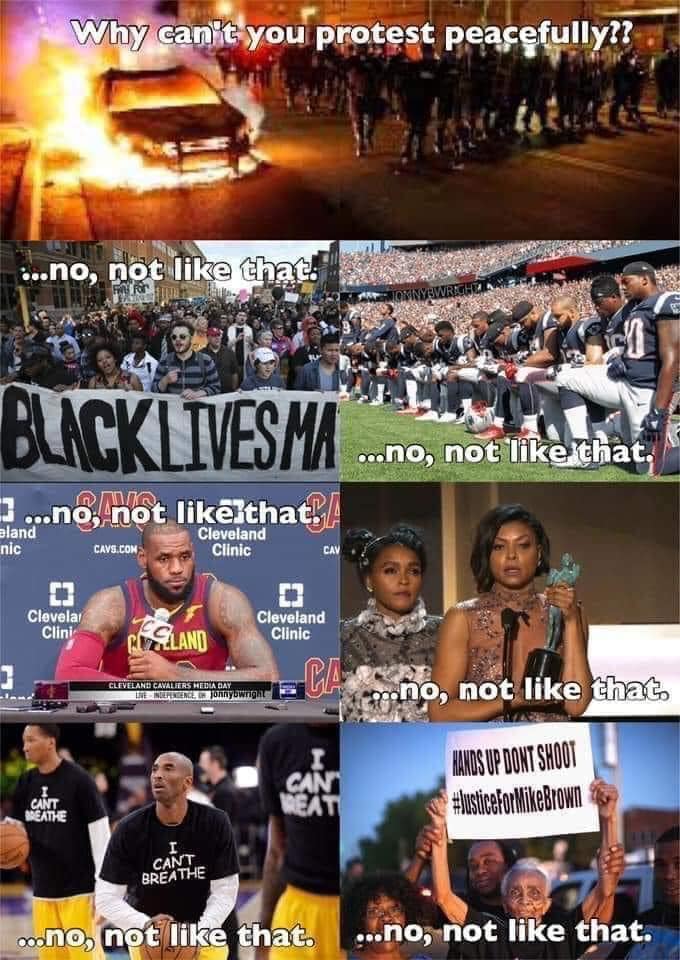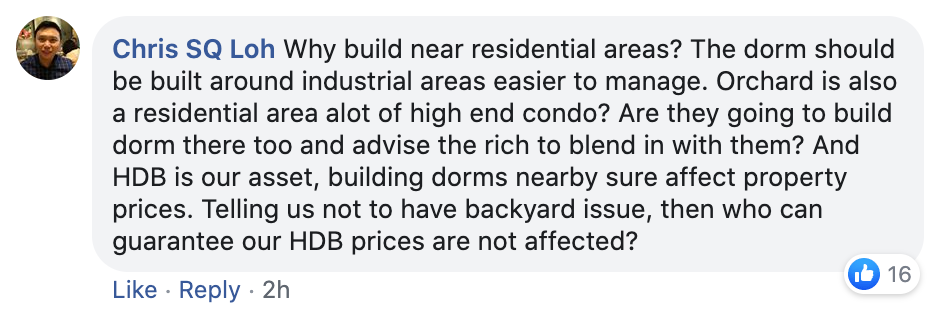BLACK LIVES MATTER.
Following the killing of George Floyd—who died in Minneapolis after a police officer knelt on his neck for almost nine minutes—protests have erupted across the United States, with solidarity action in many other countries, including the United Kingdom, Australia, New Zealand, Japan, and South Korea. (Al Jazeera English has an interactive map tracking anti-racism protests across the world.)
While the United States’ problem with race has its own context of slavery, Jim Crow, and systemic violence (among many other things), the Black Lives Matter movement and solidarity protests have prompted many of us to reflect upon our own countries.
The “right” way to protest
Singaporeans, too, have caught on and chimed in. Unsurprisingly, there’s been a lot of condemnation of the methods of protest, particularly of riots that have broken out in some parts of the US. Primed as we are to see any sort of disruption as destructive, visuals of things trashed and lit on fire have led to lots of tutting and hand-wringing about violence and damage to property, and talk about the “right” way to protest. (As if Singaporeans have any leg to stand on when it comes to teaching people how to protest!)
But as has been pointed out in the fantastic Race Tuition Centre newsletter, what we’re seeing in the US is “the effect, not the cause”. It’s what happens when people feel like there is no other way to change things or get people to pay attention.

(I’m not sure if this is the original source, but I saw this on Facebook here.)
Furthermore, as we’ve seen not just in the US, but also in Hong Kong, this is what happens when the state not only fails to de-escalate, but escalates the violence by reacting to protesters in violent or excessive ways.
This is not to say that every protester is an angel or a saint, but the power dynamics cannot be forgotten here: when you have civilians on one side, and police armed with tear gas, pepper spray, rubber bullets, even live ammunition, on the other, it’s not a meeting of equals. In this context, the police (i.e. professionals who have been given resources, support, and training) should be actively trying to defuse and de-escalate, rather than upping the ante and causing things to spin further out of control.
We don’t have to approve of everything; disagreements over methods, tactics, and strategies are part and parcel of any movement. But the very least* we can do is not jump to judge or condemn, especially when we aren’t the ones who have experienced the oppression or injustice that people are fighting against, and won’t have to live with the consequences, either.
*Like really, this is the very least we can do—we should be doing much, much more.
Racism in Singapore
Recently, a 2016 photo of Raffles Institution students in blackface resurfaced online. I’m not going to embed it in this newsletter, but Alfian Sa’at included it in his Facebook post alongside an account of his own experience with racism while at RI.
This photo was yet another reminder that Singapore has its own race issues to deal with. Minister for Education Ong Ye Kung has weighed in to remind everyone that Singapore’s situation is “entirely different” from that of the US, and that Singapore has policies “to guard against systemic racism”.
… Do we, though? This is where we Chinese Singaporeans should really listen to minorities. As members of the majority, our opinion on whether there is/isn’t racism in Singapore don’t matter as much. This might be hard for some Chinese Singaporeans to hear—particularly since we’re so used to our opinions being the main (or even the only) things that matter—but we aren’t reliable narrators when it comes to the subject of racism in Singapore. The system is built to shield us from the pain of racial discrimination, even as we benefit from it.
And honestly, if we’re still at the level of debating whether systemic racism exists in Singapore, then we’re contributing to the problem. There’s ample evidence that systemic racism exists in Singapore—from the discrimination against Malays in the armed forces, to the inexplicable Ministry of Manpower rules restricting certain jobs to certain source countries (for example, people from South Asian countries can be given work permits in the marine shipyard sector, but only Malaysians and North Asians can be given work permits for the services sector), to the privileging of Chinese students in Special Assistance Plan schools that get more government support—so any claim of ignorance from a Singaporean is pretty much wilful blindness at this point.
And if you’re thinking, “Well, Black Lives Matter is about Black people, and that’s not a problem in Singapore,” then I’m sorry to break it to you, but there’s anti-Blackness in Singapore too. Click on the tweet below to read a Twitter thread about blackface in Singapore:
We like to talk about “racial harmony” in Singapore, and to justify the policies and laws that we have in place to preserve this “harmony”. We say that it’s because of the need to preserve the peace that we have laws related to sedition or “wounding religious feelings” or promoting feelings of ill-will or hostility between races.
But these laws can also stifle serious and important discussions about race and racism in Singapore, and themselves become another instrument of oppression against minorities who want to talk openly about what they experience. Remember what happened to Preetipls and Subhas Nair? While a Chinese actor in brownface was shrugged off, it was Preeti and Subhas who were investigated and eventually issued police warnings for calling out racism—and to add insult to injury, the government even accused them of being racists.
Meanwhile, racist comments and stereotypes continue to be aired in Singapore—sometimes they even get a platform in the mainstream media. Take the op-ed in Lianhe Zaobao (link in Chinese—a report about the piece in English can be found here) that blamed the spread of COVID-19 in dormitories on the personal hygiene habits of migrant workers from “backward countries”. Or the op-ed that got half a page in the Straits Times that straight up suggested apartheid by putting migrant workers on floating dorms. In a piece for the South China Morning Post, author Balli Kaur Jaswal pointed to messages circling on WhatsApp claiming that migrant workers infected with COVID-19 would infect their “maid girlfriends”, who would then infect Singaporean households. When the government announced that new dormitories would be built near residential areas, some of the comments on Facebook continued to perpetuate narratives of migrant workers as threats to public order, while others complained about property prices dropping:


So what do we do?
We should stand in solidarity with Black Lives Matter and the anti-racism movement in the US, and there are also issues in Singapore that we can turn our attention to and address.
We might have the urge to pat ourselves on the back and say “we’re not as bad as the US”, but policing and crime in Singapore isn’t colour-blind, either. Research has highlighted that minorities are over-represented in Singapore’s prisons, and are also less likely to reintegrate upon release compared to their Chinese peers. We need to be asking why, and actively working towards addressing these issues, rather than assuming that the answer is more policing, or—as we seem to be doing with the whole “Smart Nation” obsession—embracing tech for more surveillance and population control.
This isn’t something that I’ve seen come up in the Singapore context, and I’m still working through my own thoughts about #AbolishThePolice, but I saw the Twitter thread below (again, click on the tweet to open the whole thread) and thought it would be good to include, to provide some food for thought about policing and its place in society. (Verso Books has also made the book she recommends, The End of Policing, free to download as an ebook.)
If discussions about abolishing the police are a step too far for Singapore, we could start with breaking the habit of running to the authorities any time we encounter something we don’t like. Stop snitching on fellow Singaporeans. Stop making police reports over things that make you uncomfortable, but don’t actually cause any real harm (it’s been years but I still can’t get over the number of adults who called the cops over 17-year-old Amos Yee’s video—ironically propelling him to far greater fame than he deserved).
Also, start demanding robust oversight mechanisms. As I mentioned in the last weekly round-up issue, we don’t have an independent body to check the police in Singapore—the Internal Affairs Office is basically a ownself-check-ownself approach. Public trust in the police might be high in Singapore, but that isn’t the point; whether we trust the cops or not, there should be proper checks and balances built into the system.
When it comes to dealing with discrimination—not just racial discrimination, but also on the grounds of gender, or sexual orientation, or gender identity and expression, etc.—there is a long way to go in Singapore. This explainer outlines the barriers to effectively addressing discrimination in Singapore. One thing we can do is push our elected lawmakers to do more to introduce robust anti-discrimination legislation.
The lack of civil liberties also restricts our ability to express ourselves and take collective action against injustice. Our Public Order Act is so excessive that even peaceful, solo protests—or anything else that the authorities decide is a “cause-related activity”—can be criminalised. Activists, including young climate strikers, are currently under investigation simply because they posed (alone) with signs and placards in public places. As Singaporeans, we should be demanding our rights to freedom of expression and assembly. There’s currently a petition urging the government to review the Public Order Act and give Singaporeans our freedom of assembly back.
Again, I’m going to point you to another issue of Race Tuition Centre, which details things we should be doing to dismantle racism. One point that I’d like to strongly second: sitting with discomfort. Because freedom of expression is so restricted and regulated in Singapore, because we’re so used to hegemonic narratives and unfamiliar with more pluralistic environments, Singaporeans aren’t very good at dealing with conflict, disagreement, and discomfort. We tend to assume that they’re destructive and dangerous.
Discomfort sucks. But it’s not injustice. And it’s much more important to address injustice than to feel comfortable. Discomfort can be good for us, if we treat it as an opportunity and reminder to reflect and to learn.
P.S. Worth reading: this interview about complicity and white fragility. Then think about what parallels there might be with being Chinese in Singapore and engaging in discussions about race.

